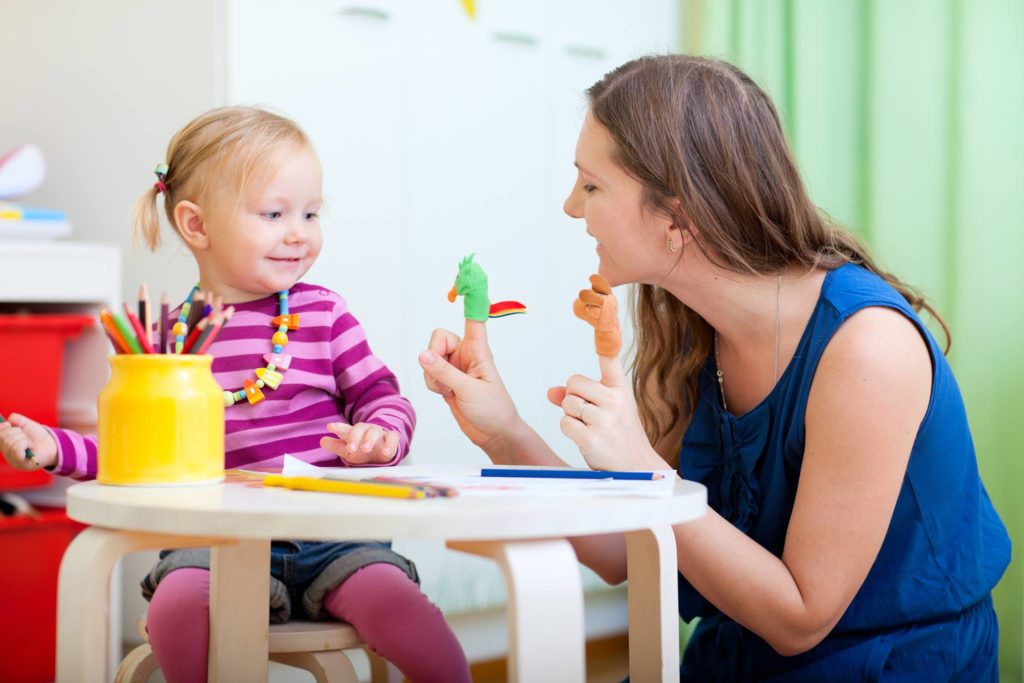
Adapted from Thuja Jameson M.S. CCC-SLP and Early Intervention Manager / Virginia Student Placement Coordinator at CORA Blacksburg Pediatrics in Blacksburg, VA.
Recognizing key stages of development and meeting milestones for children ages 2-5 can be a daunting task.
Today we’ll address some key stages of development for children ages 2-5 so you can better gauge if your child is meeting milestones as expected or if maybe it’s time you seek an evaluation from a licensed speech-language pathologist (SLP). Many parents find it hard to know whether your child’s speech and language skills are developing as expected. And when does it make sense to ask your child’s health care provider for a referral to see a speech-language therapist? A simple evaluation is all it takes, yet it’s that exact uncertainty most parents confront at some point early on in a child’s development.
At CORA, a quick and painless evaluation from one of our SLPs can quickly determine whether speech-language therapy is needed to help your child hone their skills.
Point, Follow Basic Directions, and Understand Simple Questions
By age 2, we expect a child to follow 1-step directions with gestures, understand simple questions like “Where’s Daddy?”, and point to pictures in a book when items are named. Furthermore, a 2-year-old can generally say 50-300 words, produce a variety of 2-word combinations, and be understood by family 50-75% of the time; unfamiliar listeners 50% of the time (i.e. those who are not frequently around your child).
Enhanced Vocabulary with Use of Descriptors
A 3-year-old can usually follow related two-step directions like “Get the paper cup and put it in the trash”, follow directions with descriptive words such as “Let’s go fast” or “Get the red ball”, point to body parts when asked, and recognize names of family members. These are all abilities within reason for your 3-year-old who should now have a vocabulary of 1000 words or greater. At three years of age, an average sentence length of three (3) words and early use of grammar such as plural –s and the –ing verb ending are all things to be expected by this stage of development. They should be understood 75-100% of the time by family and 75% of the time by unfamiliar listeners.
Advancing Skills
By age 4, we expect a child to understand most questions about their current activities and environment, understand some colors and shapes, and comprehend words for family members such as brother and aunt. How about word count? If your 4-year-old’s vocabulary continues to grow to about 1600 words, and he/she has an average sentence length of four (4) words or more then we’re right on track! His/her grammar and vocabulary at this stage should become more advanced with the use of past tense verbs, “a” and “the”, and asking Wh- and Yes and No questions. Approximately 95-100% of all listeners – family and/or unfamiliar – should be able to fully understand your child when he/she speaks.
Now We’re Talking!
By age 5, we expect a child to follow 3-step unrelated directions, like “Get your book, put on your shoes, and find your markers.” They should understand words for time and order such as “first/next/last”, understand most of what is said at home and at school, and be able to answer simple questions about a story. A 5-year-old should have a vocabulary of 2200-2500 words, have an average sentence length of five (5) words within the context of more advanced sentences, and a functioning knowledge of more complex grammar but with regional variations; occasional errors are to be expected. Your child should now be understood nearly 100% of the time by all listeners.
CORA’s Speech-Language Pathologists are Here for YOU!
If you have concerns about your child’s speech-language development, CORA’s speech-language pathologists are ready to help! We not only address concerns related to the speech and language skills discussed above, but also concerns about feeding and swallowing, voice, fluency/stuttering, and social communication skills. Ask your child’s health care provider for a referral for a speech-language evaluation. We will conduct a comprehensive evaluation of your child’s skills. Then we will let you know where they stand compared to age expectations and, if needed, how speech-language therapy can help your child to improve their speech-language skills.
Want more information on Speech-Language Pathology?
The ASHA website is chock-full of it! If you feel the time is right to seek an evaluation for your child, please contact our CORA clinic nearest you or schedule an appointment today. With 24-48 hour scheduling and over 4,000 insurances accepted, our speech-language pathologists are ready to serve you in the clinic or in your home with telehealth now available.
References and resources:
American Speech-Language-Hearing Association. (2017). Typical speech and language development.
Bernthal, J. E., Bankson, N. W., & Flipsen, Jr., P. (2013). Articulation and phonological disorders, seventh edition: Speech sound disorders in children. Upper Saddle River, NJ: Pearson Education, Inc.
Bowen, C. (2016, September 7). Table 1 – intelligibility.
Lanza, J. R. & Flahive, L. K. (2012). Linguisystems guide to communication milestones: 2012 edition. East Moline, IL: Linguisystems, Inc.
Owens, Jr., R. E. (2012). Language development, an introduction: Eighth edition. Upper Saddle River, NJ: Pearson Education, Inc.
Rossetti, L. (2005). The Rossetti infant-toddler language scale. Austin, TX: PRO-ED, Inc.
